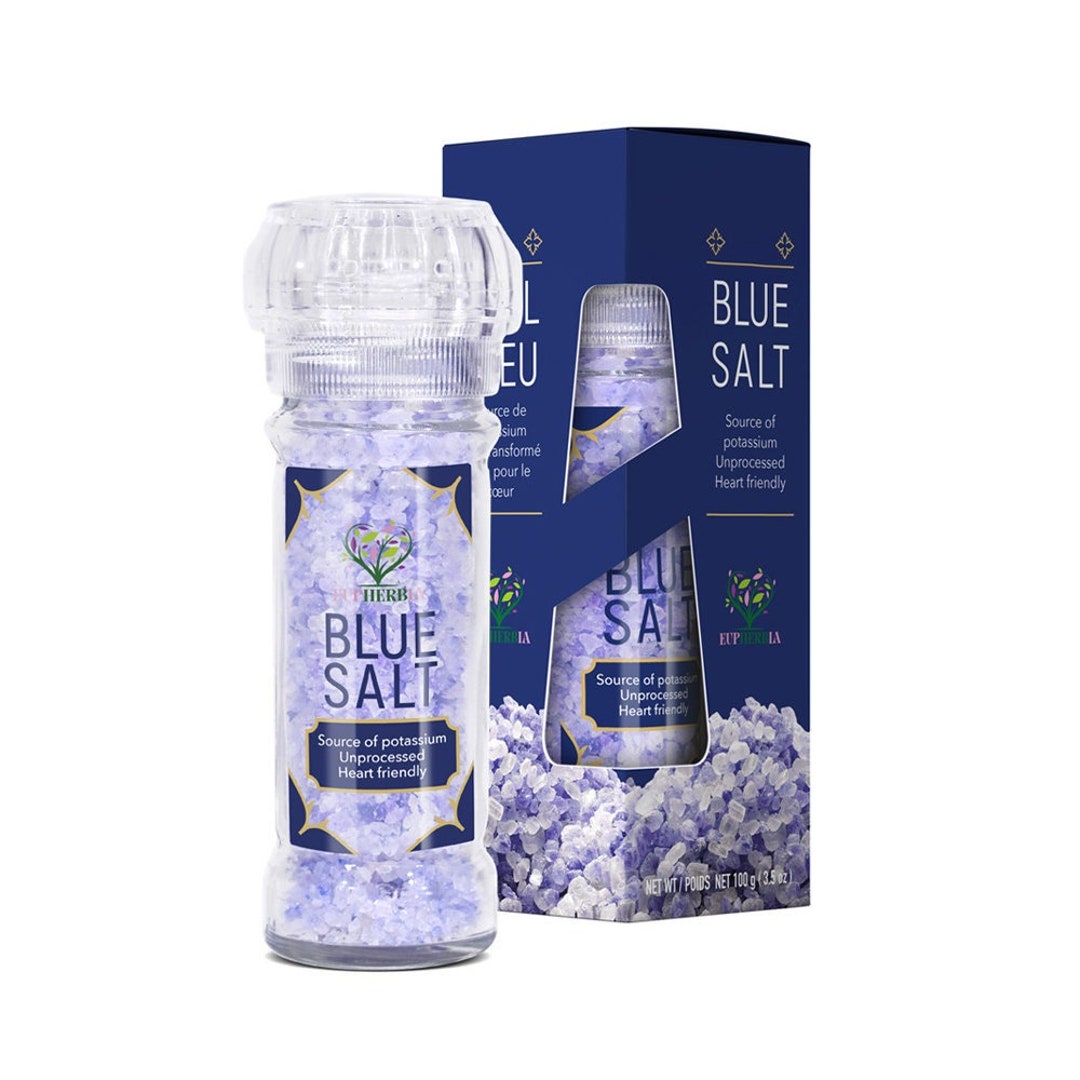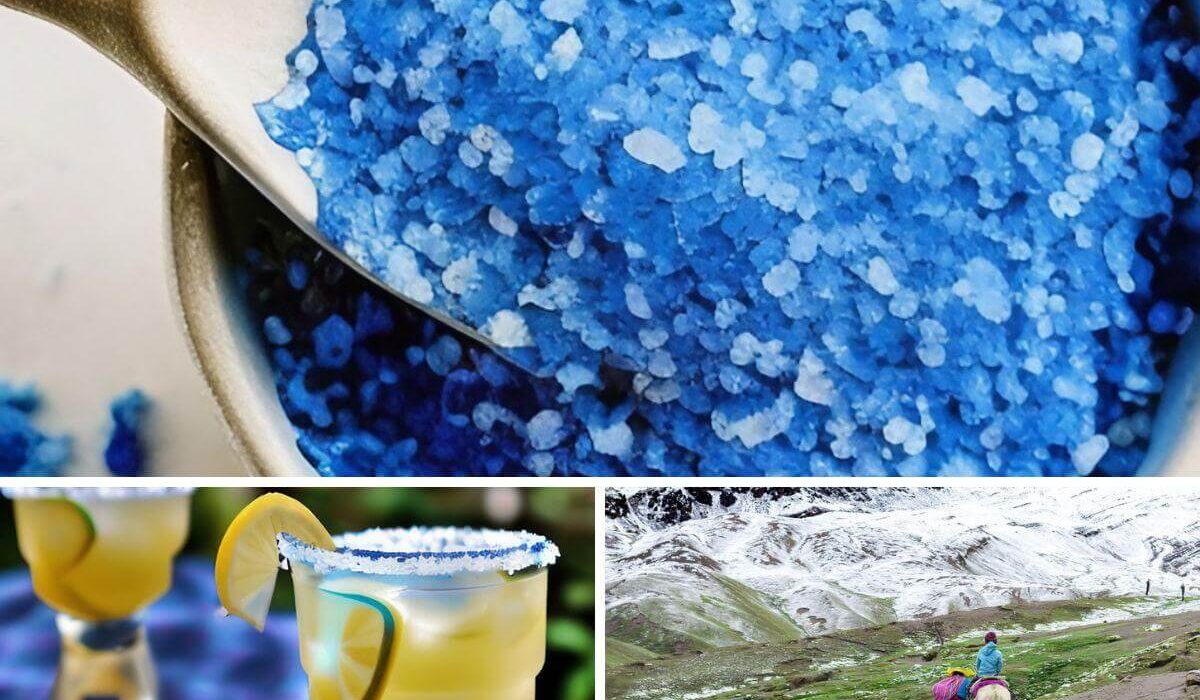Mastering The Blue Salt Trick: Secrets To Enhance Your Culinary Skills
When it comes to elevating your culinary game, the "blue salt trick" is a term that might pique your interest. This intriguing technique has been buzzworthy among chefs and food enthusiasts. But what exactly is the blue salt trick, and how can it transform your cooking? Understanding this concept could be your gateway to mastering flavors and textures in ways you never imagined possible.
Delving into the culinary world, the blue salt trick is more than just a seasoning technique; it's an art form that involves using specific types of salt to enhance the flavor profile of dishes. With its vibrant hue and unique properties, blue salt can offer a sophisticated touch to gourmet meals, making it a staple in high-end kitchens. By learning this trick, you can take your cooking from ordinary to extraordinary, impressing friends and family with every bite.
For those who are eager to experiment with new culinary techniques, the blue salt trick offers a wealth of possibilities. From seasoning meats to enhancing the taste of vegetables and desserts, the applications are limitless. This article will guide you through the basics of blue salt, its origins, and how to incorporate it into your cooking to achieve professional results. Ready to spice up your kitchen skills? Let's embark on this flavorful journey together.
Read also:Remy Lacroix Iconic Star In The Adult Film Industry
Table of Contents
- What is Blue Salt?
- The Origins of Blue Salt
- What is the Blue Salt Trick?
- How Does Blue Salt Enhance Flavors?
- Culinary Applications of the Blue Salt Trick
- Is Blue Salt Safe for Everyone?
- How to Use Blue Salt in Your Dishes?
- Common Mistakes When Using Blue Salt
- Where Can You Buy Blue Salt?
- The Science Behind Blue Salt
- What are the Health Benefits of Blue Salt?
- Exploring Different Types of Salt
- Frequently Asked Questions About Blue Salt
- Conclusion
What is Blue Salt?
Blue salt is a rare and exotic variety of salt known for its distinct blue hue and rich mineral content. Unlike traditional table salt, blue salt is harvested from ancient salt deposits, often found in regions like Iran's Semnan province. Its striking color comes from the presence of sylvinite, a potassium mineral that forms during the crystallization process, contributing to its unique appearance and taste.
Characteristics of Blue Salt
Blue salt is celebrated for its coarse texture and mineral-rich composition. It offers a slightly tangy and mild flavor, making it a versatile addition to various dishes. The mineral content, including potassium, calcium, and magnesium, not only enhances flavor but also provides essential nutrients that contribute to its health benefits.
The Origins of Blue Salt
Understanding the origins of blue salt involves tracing back to the ancient geological formations where it is found. These salt deposits were formed millions of years ago when ancient seas evaporated, leaving behind a rich bed of minerals. Over time, tectonic movements and environmental changes led to the formation of blue salt, which is now mined and cherished for its rarity and quality.
Geographical Significance
The most notable source of blue salt is the Semnan province in Iran, where the unique geological conditions allow for the formation of sylvinite crystals. This region is renowned for its pristine salt mines, which are carefully managed to preserve the natural integrity of the salt. The extraction process is meticulous, ensuring that the blue salt retains its distinctive properties and purity.
What is the Blue Salt Trick?
The blue salt trick is a culinary technique that involves strategically using blue salt to enhance the flavors and presentation of dishes. By understanding the unique properties of blue salt, chefs can create a balanced flavor profile that elevates the dining experience. This technique goes beyond simple seasoning; it incorporates the visual appeal and mineral complexity of blue salt to achieve gourmet-quality results.
Techniques Involved
- Flavor Balancing: Blue salt can be used to balance flavors in savory and sweet dishes, adding depth and complexity.
- Visual Enhancement: The vibrant hue of blue salt adds a visually appealing element to dishes, making them more enticing.
- Textural Contrast: The coarse texture of blue salt provides a pleasant contrast, enhancing the mouthfeel of dishes.
How Does Blue Salt Enhance Flavors?
Blue salt enhances flavors through its unique mineral composition and coarse texture. The minerals present in blue salt interact with the natural flavors of ingredients, intensifying their taste and aroma. The coarse texture also contributes to a distinct mouthfeel, making each bite more satisfying and memorable.
Read also:Ecofriendly Face Wash Alternatives Natural Solutions For Radiant Skin
Mineral Interaction
The presence of potassium, calcium, and magnesium in blue salt plays a crucial role in flavor enhancement. These minerals help to accentuate the natural sweetness and umami flavors in ingredients, creating a harmonious balance that elevates the overall taste profile of a dish.
Culinary Applications of the Blue Salt Trick
The versatility of the blue salt trick allows for a wide range of culinary applications, from savory dishes to desserts. Chefs often utilize blue salt to enhance the flavor and presentation of gourmet meals, making it a staple in high-end kitchens.
Popular Dishes Featuring Blue Salt
- Steak and Meats: Blue salt is often used to season steaks and meats, adding a subtle yet complex flavor profile.
- Vegetable Dishes: The tangy notes of blue salt complement the natural sweetness of roasted vegetables.
- Desserts: In desserts, blue salt can provide a unique contrast to sweet flavors, enhancing the overall taste experience.
Is Blue Salt Safe for Everyone?
While blue salt is generally safe for consumption, it is important to consider individual dietary needs and restrictions. Due to its mineral-rich composition, blue salt may not be suitable for individuals with certain health conditions, such as hypertension or kidney disease. Consulting with a healthcare professional is recommended before incorporating blue salt into your diet.
Potential Allergens
There are no known allergens associated with blue salt. However, individuals with sensitivities to specific minerals should exercise caution and consult with a healthcare professional if necessary.
How to Use Blue Salt in Your Dishes?
Incorporating blue salt into your cooking requires an understanding of its properties and how they interact with different ingredients. By following a few simple guidelines, you can master the blue salt trick and elevate your culinary creations.
Guidelines for Usage
- Start Small: Begin with a small amount of blue salt to avoid overpowering the dish.
- Season Gradually: Add blue salt gradually, tasting as you go to achieve the desired flavor balance.
- Pair Wisely: Consider the natural flavors of the ingredients and how blue salt can complement or enhance them.
Common Mistakes When Using Blue Salt
While the blue salt trick can elevate your cooking, there are common mistakes that can detract from its effectiveness. Avoiding these pitfalls will help ensure that your dishes are flavorful and well-balanced.
Overseasoning
One of the most common mistakes is overseasoning, which can result in a dish that is too salty and unbalanced. To avoid this, start with a small amount of blue salt and taste as you go, adjusting the seasoning as needed.
Where Can You Buy Blue Salt?
Blue salt is available from specialty food stores, gourmet markets, and online retailers. Due to its rarity, it may not be readily available in all locations, so purchasing from reputable sources ensures quality and authenticity.
The Science Behind Blue Salt
The unique properties of blue salt can be attributed to its mineral composition and formation process. Understanding the science behind blue salt provides valuable insight into its culinary applications and health benefits.
Formation Process
Blue salt is formed through the crystallization of sylvinite, a potassium mineral, in ancient salt deposits. This process results in the distinct blue hue and mineral-rich composition that characterizes blue salt.
What are the Health Benefits of Blue Salt?
In addition to its culinary uses, blue salt offers several health benefits due to its mineral-rich composition. Incorporating blue salt into your diet can provide essential nutrients and support overall well-being.
Mineral Content
Blue salt contains a variety of essential minerals, including potassium, calcium, and magnesium, which can support cardiovascular health, bone strength, and electrolyte balance.
Exploring Different Types of Salt
While blue salt is a unique and valuable addition to the culinary world, there are many other types of salt that offer their own distinct flavors and benefits. Exploring these varieties allows for a more comprehensive understanding of how salt can enhance your cooking.
Common Salt Varieties
- Himalayan Pink Salt: Known for its pink hue and mineral content, this salt is often used in gourmet cooking.
- Sea Salt: Harvested from evaporated seawater, sea salt offers a clean, briny flavor.
- Fleur de Sel: A delicate and flaky salt, often used as a finishing salt for its subtle flavor.
Frequently Asked Questions About Blue Salt
- What makes blue salt different from regular salt? Blue salt is distinct due to its mineral-rich composition and unique blue hue, which contribute to its flavor and visual appeal.
- Can blue salt be used in baking? Yes, blue salt can be used in baking to enhance flavors and provide a unique visual element.
- Is blue salt more expensive than regular salt? Due to its rarity and unique properties, blue salt is generally more expensive than regular table salt.
- How should blue salt be stored? Blue salt should be stored in an airtight container in a cool, dry place to preserve its quality and flavor.
- Can blue salt replace regular salt in recipes? While blue salt can be used as a substitute, its unique flavor profile may alter the taste of the dish, so adjustments may be necessary.
- Are there any health risks associated with consuming blue salt? Blue salt is generally safe for consumption, but individuals with specific health conditions should consult with a healthcare professional before use.
Conclusion
Incorporating the blue salt trick into your culinary repertoire can transform your cooking, offering new dimensions of flavor and presentation. By understanding the properties and applications of blue salt, you can elevate your dishes to gourmet levels, impressing diners with your culinary prowess. Whether you're a seasoned chef or a home cook, mastering the blue salt trick is a valuable skill that enhances your cooking experience.
Article Recommendations

